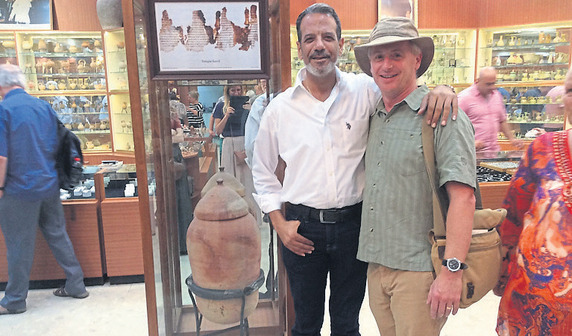Cave time
February 2017 saw the announcement across all news media of the discovery of a new Dead Sea Scrolls cave.

It highlights the continued fascination with these ancient documents and a continuing curiosity over what may yet be found in the barren deserts that border the lowest point on earth.
Original scroll find
The story of the discovery of the Dead Sea Scrolls in 1947 is well known and probably somewhat embellished with time. Bedouin shepherd boys found the first cave accidently and the scrolls inside made their way, inevitably, onto the antiquities market. A Bethlehem dealer, Kando, handled these original discoveries. Identified by the newly formed State of Israel, they were quickly bought up to become national treasures and archaeological expertise was sent to the cave regions. Over 900 scrolls have been found in 11 caves, most of them in the most famous, Cave 4.
Cave 4 was not actually found until 1952 which shows how well hidden these caches of manuscripts were. Further caves were discovered and excavated in the years that followed. Cave 11 was identified in 1956 and contained the longest single scroll to have been found.
Scholars generally agree that the scrolls were the property of a Jewish sect called the Essenes, who lived nearby at Qumran. This desert community ceased to exist after the Roman destruction of the temple in AD 70 when the Jews faced a time of terrible persecution. The most likely scenario is that they had hidden their library of scrolls in the various caves, where the dry climate of the Dead Sea would ensure their preservation for 2,000 years. This explanation provides a latest possible date for the scrolls – they must have been written before AD 70. Some are much older – the Great Isaiah Scroll from Cave 1 is considered to have already been over 200 years old at the time of hiding.
Reliability of copyists
The value of these scrolls is that they include most of the books of the Old Testament and are over 1,000 years older than the previously known complete Hebrew Scriptures. The scrolls demonstrate the reliability of the copying of the biblical books over the intervening years. They also cast a great deal of light on the region at the time of Jesus. 60% of the books are not biblical, but texts related to the Essene community, their commentaries on the Bible and their views of life.
The Dead Sea Scrolls are also full of mysteries. They refer to unknown personalities and events. One particular scroll, the Copper Scroll (3Q15), seems to be a treasure map describing the hiding places of vast amounts of gold and silver. Despite sceptical scholars and enthusiast amateurs, not a single nugget has come to light. One manuscript was thought to be a fragment of the Gospel of Mark (7Q5), though this has not received general support.
Looted in the 1960s?
Are more scrolls likely to be found? The answer is positive. There are probably more caves and hiding places to be uncovered in the Dead Sea region. The latest, Cave 12, found by archaeologists from Hebrew University and Liberty University demonstrates that this is the case. Unfortunately the cave was devoid of scrolls. It had been looted long ago, leaving only the broken jars, strap and binding cloth to indicate scrolls had once been stored there.
Where are the scrolls of Cave 12? The looting probably happened in the 1960s, evidenced by remains of modern tools in the cave. Therefore, the scrolls will be among the countless priceless relics that make their way onto the black market. Most will disappear into private collections and, even if they are one day revealed to scholarship, uncertainty will surround their origins. However, who knows what may be among them? Other Old Testament scrolls and manuscripts related to Jewish thought in the first century will be remarkable enough. But there is always a chance that a fragment of New Testament writing may appear among them. The discovery of Cave 12 reminds us that the story of the Dead Sea Scrolls is not over yet.
Chris is the D.L. Moody Lecturer in Apologetics, Moorlands College.



